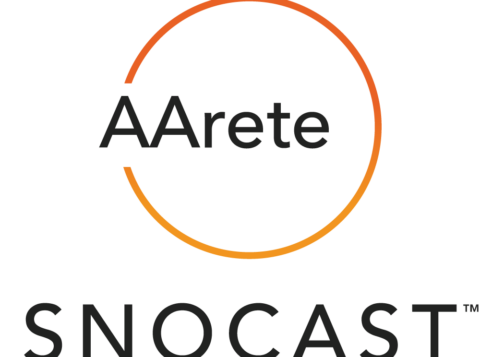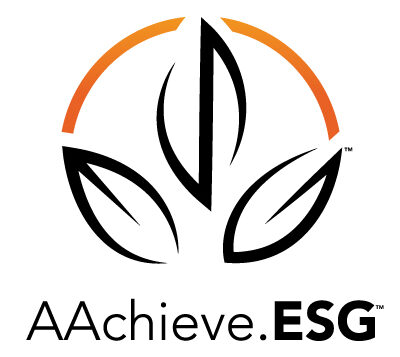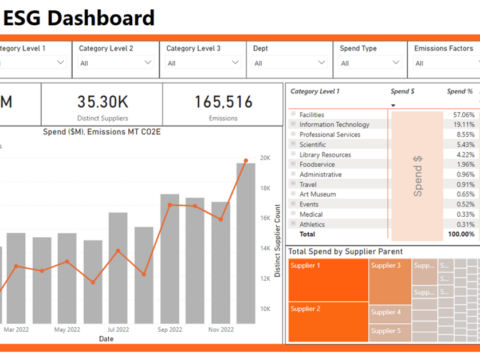Optimizing Tech Spend: A Roadmap for Businesses to Reduce Costs and Boost Efficiency in the Digital Era
This is an AArete Profitability Improvement insight
Amid escalating technology costs, businesses of all sizes can achieve cost optimization while meeting business and tech objectives.
In an increasingly interconnected and digital global economy, businesses of all sizes — from budding startups to established multinational corporations — and across industries, are looking to reduce costs and optimize spend.
As fiscal overseers look to target budgetary concerns and quell rising costs, a common area of concern appears — the continually rising cost of technology.
Technology is a driving force behind all companies, and its growing presence and importance to organizations has become increasingly and unendingly expensive.
Recent surveys of CEOs from various sources have found that most business leaders plan to invest significantly in technology, specifically targeting processes and systems automation, advanced analytics development, employee training, and deploying cloud, AI, and other advanced technologies.
While much of this spending is focused on reinventing the business for the future, many CEOs said these investments were to preserve the current state of their organizations.
In a 2023 survey of technology managers by IDC, 62% expected their companies’ technology spending would increase or stay the same as in 2022. Meanwhile, Gartner projects overall IT spending will reach $5.1 trillion by 2023.
Growing investment requirements in cybersecurity and analytics tie directly into “keep the lights on” business demands. But in an era where fiscal responsibility is the name of the game, a more proactive, streamlined approach to technology spend management is necessary.
Reactive Strategy and Misaligned Goals
Businesses searching for the root cause of these burgeoning challenges will likely discover glaring gaps in IT spend management. Technologists, tasked with ensuring the tech stack satisfies the company’s immediate needs, often don’t have the time or tools to focus on the broader financial strategy.
Amid the quest to address the pressing concerns of the moment, the long-term implications of their decisions fall by the wayside. Likewise, they often lack the training and time to apply strategic sourcing best practices. Meanwhile, procurement teams often lack a comprehensive understanding of the strategic tech imperatives and the technical details to challenge technologists. By viewing matters exclusively through the lens of cost reduction, they ignore the integral role technology plays in driving business growth. This disconnect between critical functions becomes a compounding headache for both sides.
Another common factor in spiraling tech costs can be found in contracts. Businesses often lack foresight and visibility in their contracts with suppliers. Renewal status and visibility into existing contracts are overlooked. What may seem like mundane administrative details, can have a substantial impact down the line. While selecting a vendor, procurement might inadvertently let short-term cost considerations trump strategic alignment.
With proper planning, contracts will protect the company in the future. The path to mitigating these issues lies in developing a long-term strategy for managing tech suppliers.
Act Proactively
Contracts, especially long-standing ones, must be systematically and regularly re-evaluated.
Have existing contracts become unnecessarily expensive? Are there overlaps in the portfolio where multiple vendors are being paid for the same service? Are there less costly suppliers or contracts for services that are no longer needed? These are the questions businesses must ask themselves to optimize their tech spending.
Businesses that have stayed with the same vendor for over a decade will likely find themselves paying significantly more for tech services than the market price, especially if the product or service is more of a commodity now. Meanwhile, it is not uncommon for departments to rely on different CRM systems. For businesses that pay multiple vendors for the same service, portfolio streamlining can mitigate wasteful spending. These can become costly oversights, with prices escalating at an alarming rate and eating into profits, and contracts not providing price advantages for growth.
To halt this trend, organizations must stay ahead of their contracts, consider alternatives to preexisting suppliers, and ground decision-making in business strategy, scalability, and risk protection.
Procurement as a Strategic Sourcing Advisor
When organizations take this proactive approach, procurement can be transformed into a strategic sourcing partner whose presence and services extend to the IT office. Procurement teams can allocate resources to conducting comprehensive market research, exploring supplier relationships, and gaining a deeper understanding of technology imperatives. Some companies have even put procurement in charge of IT buying. In the process, procurement oversees the overall cost profile and identifies opportunities.
While IT teams can become tied to their vendors, procurement can act as a third party that makes hard decisions. After gathering market intelligence, procurement can take decisive action to replace overpriced capabilities with cheaper alternatives.
Once companies bridge the chasm between procurement and IT and align their priorities, they can reap the rewards of a streamlined portfolio and provide the time and information needed to manage their tech spending.
Size Considerations
The function of procurement is often predicated on the size of the business. Small businesses, operating with limited resources, often neglect procurement when they should reconsider it as a foundational function. A solution can be found in outsourcing, specialized, yet expensive, skill sets that may not be needed full-time but remain critical to the business’s success. By prioritizing strategic sourcing, businesses can avoid functional breakdowns as the company grows and direct control from senior executives diminishes.
For startups, establishing structured procurement practices early on can provide a competitive edge — enabling them to manage their costs effectively and foster a culture of strategic spending. Large organizations, especially those that have grown through acquisitions, must focus on aligning contracts and tech stacks across their various entities. These companies often encounter duplicated contracts and uneven technology deployment, resulting in unnecessary expenditures. By identifying any redundancies, rationalizing high-priority contracts, and streamlining costs, large companies can optimize their tech spend.
According to an internal AArete analysis on IT cost savings, small organizations, which typically lack buying power, have savings of 5% to 12%. Mid-sized companies achieve a strong return, 11% to 20%, across a portfolio of areas. Meanwhile, large organizations may have a lower volume of opportunities to cut IT costs, but can often still generate significant returns, between 7% and 16%.
No matter a company’s size, these percentages indicate that savings are possible when a careful, proactive approach is taken to tech spending.
Business Objectives Meet Tech Imperatives
Technology has become an increasingly costly and prevalent target for spending, with factors such as data risk management and cybersecurity introducing expenses that were unheard of just a few years ago. Without careful attention to the companywide portfolio, supplier choice, and their relationship to broader business objects, it can become a needless financial drain.
To address the concerns and optimize spending, businesses of all sizes and across all industries must prioritize contract optimization and visibility. Likewise, they must allocate time and resources to identifying vendors that align with their broader goals and demands by cultivating bonds between IT and procurement. Only then, will businesses be able to effectively navigate the challenging terrain of tech expenses and build a sustainable future in a constantly evolving digital world.
Click here to tune into a recent UPSTACK podcast I had the pleasure of being a guest on, Strategic Technology Sourcing, to dive deeper into this topic.
Learn more about AArete’s Digital & Technology solutions






































































































































































